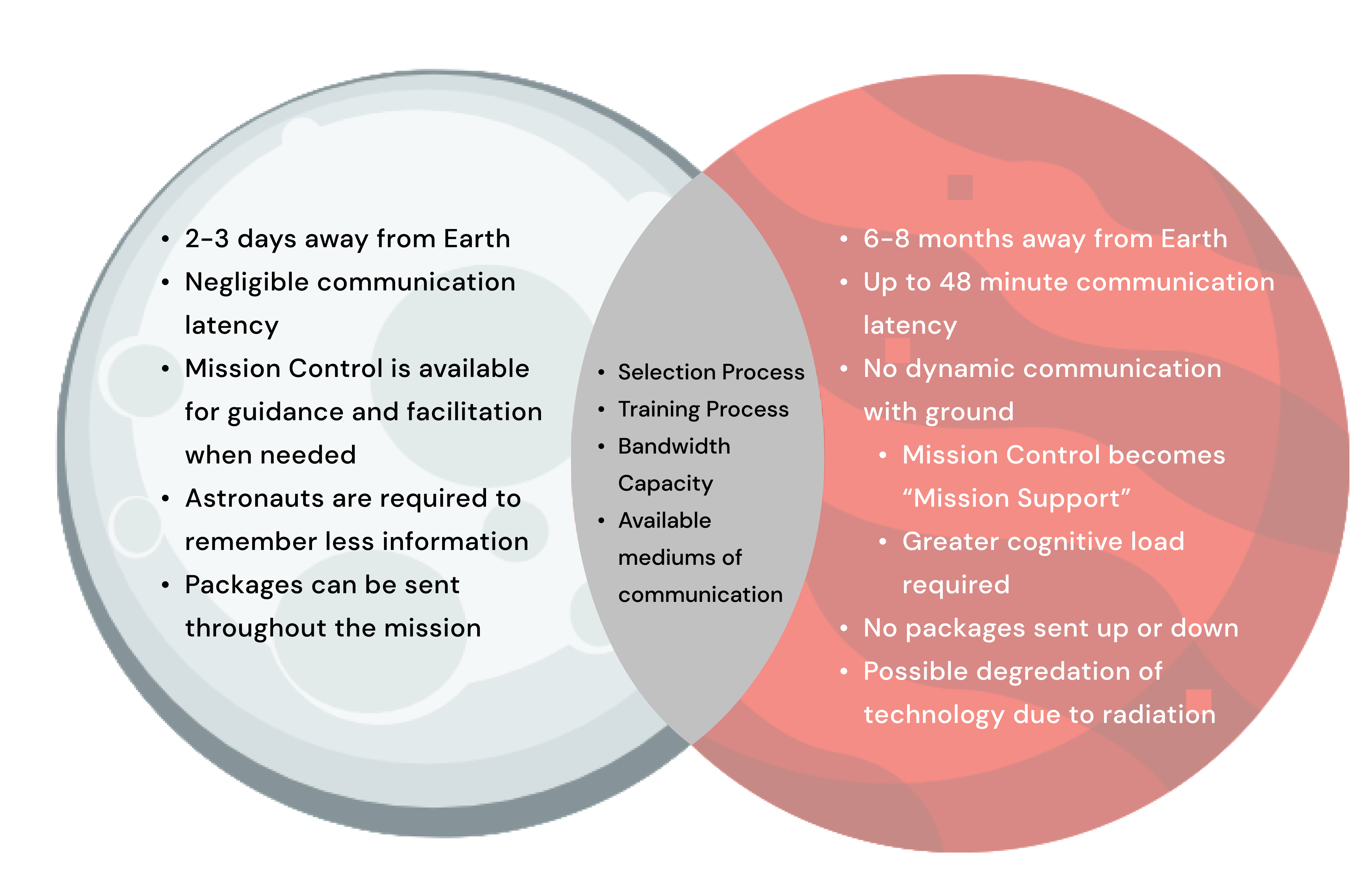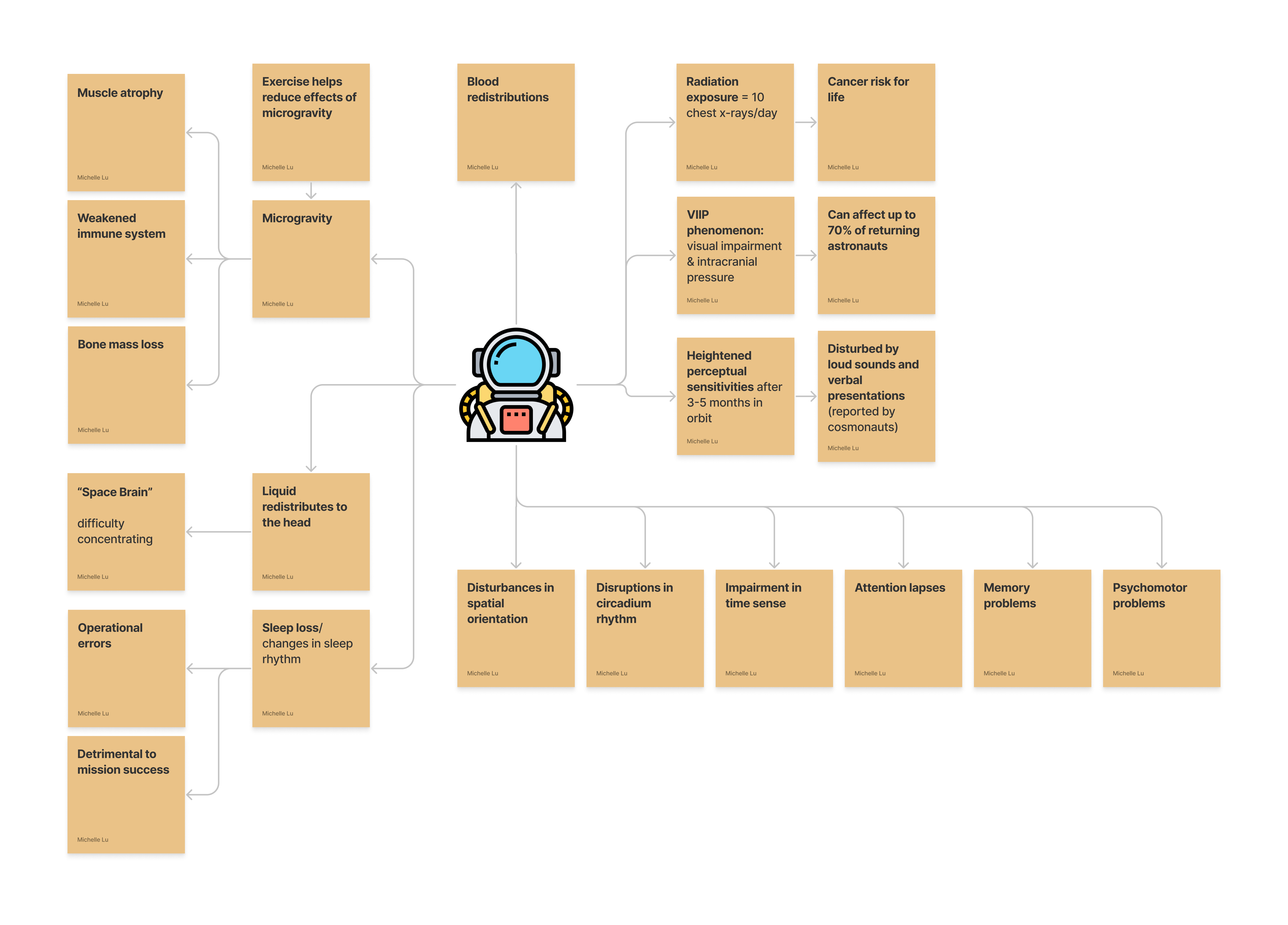Future missions to Mars will face the daunting challenge of communicating under a 40-minute round trip time delay.
In collaboration with the NASA Ames HCI Group, our team was tasked to devise a solution for supporting meaningful communication between astronauts on Mars and their loved ones on Earth.
In comparison to the nearly negligible time delay between Earth and the ISS, deep space exploration missions will no longer have access to dynamic communication between ground and space due to the 40-minute latency.

However, during these trying 3 years of transit and living on Mars, communication with loved ones will be critical for combatting the unique psychological stresses of spaceflight and maintaining the wellbeing of astronauts.
How might we support meaningful communications between astronauts on Mars and their loved ones on Earth?
Currently, human spaceflight has only gone as far as the Moon, which means that future missions to Mars will require preparing for unfamiliar conditions and unforeseen circumstances. While many of the existing training and preparation protocols will continue to apply to Mars missions, they will need to adapt to a new set of limitations to ensure that crews are well equipped to handle the Mars environment. Below is a Venn diagram that compares and contrasts missions to the Moon/ISS versus to Mars:

On Mars, astronauts will be subject to extreme environmental conditions that have never before been experienced by mankind. Due to significantly reduced gravity and increased radiation exposure, the body naturally responds to these changes in the environment, typically manifesting as impaired visuomotor abilities. The model below maps out the different health effects that astronauts may experience throughout the mission.

These physiological effects are closely tied to impacts on psychological state as well. Subject matter experts warn that there are also repercussions of microgravity on the central nervous system, causing disruptions in natural circadian rhythm and potential emotional impairments. This could negatively impact astronauts' interpersonal interactions with both crew and family back on Earth, mission success, and personal wellbeing, which would result in dire consequences as outlined below.

Internal behavioral health experts indicated an astronaut’s emotional and psychological state can impact task performance and safety.

Without communication with the family, reintegration is extremely difficult, and it can create resentment and conflict between family members upon return.

Psychological well-being and resiliency is directly tied to external communication with support systems.

If an astronaut cannot perform their duties because of their psychological well-being, it could jeopardize scientific progress and NASA’s reputation.

Positive communication interactions between astronauts and their support systems could bolster NASA’s public image and trigger funding.